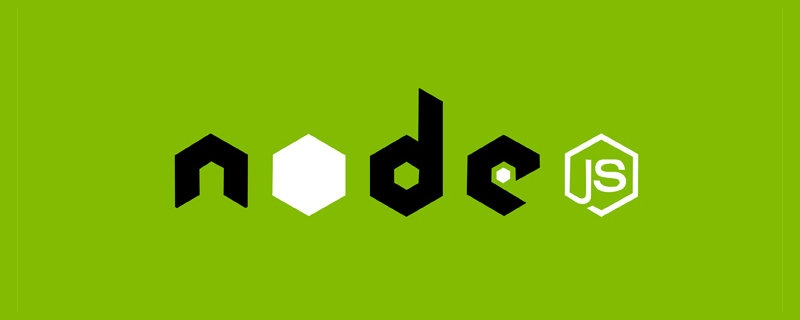 PHP Framework
PHP Framework Swoole
Swoole Swoole Advanced: How to use multi-process to improve PHP processing capabilities
Swoole Advanced: How to use multi-process to improve PHP processing capabilitiesWith the development of the Internet, the requirements for Web application performance and concurrent processing capabilities are becoming higher and higher. For PHP language applications, due to its single-threaded nature, performance bottlenecks are prone to occur in high-concurrency scenarios. As a high-performance asynchronous network communication framework, Swoole can effectively improve the processing capabilities of PHP applications, allowing it to perform well in high-concurrency scenarios.
In Swoole's official documentation, we can find that it supports multi-process programming. This method allows us to evenly distribute a large task to multiple processes for execution, thus improving the processing capabilities of PHP applications to a certain extent. At the same time, multi-process based programming can also achieve more flexible process management and resource scheduling, effectively improving the stability and reliability of the program. Below, we will introduce in detail how to use Swoole's multi-process programming method to improve PHP processing capabilities.
What is multi-process?
Simply put, a process is a running program. Multi-process means that a program is divided into multiple processes for execution.
In Unix/Linux systems, each process has a unique process ID, through which different processes can be distinguished. The essence of multi-process programming is to divide a program into multiple processes for execution. Each process has independent address space, data stack, instruction counter and other resources. Communication between processes can be achieved through message queues, pipes, shared memory, etc.
Why use multiple processes?
Using multi-process programming can bring the following benefits:
- Improve processing capabilities: Multi-process programming can evenly distribute a large task to multiple processes for execution, thereby improving The processing power and concurrency performance of the program.
- Stability and reliability: Multi-process programming can improve the stability and reliability of the program through process management and resource scheduling.
- Parallel computing: Multi-process programming allows different processes to perform computing tasks at the same time, thereby achieving parallel computing.
How to use multi-process in Swoole?
The following introduces the multi-process programming method based on Swoole to help us improve the processing capabilities of PHP applications.
Create subprocess
In Swoole, we can use the swoole_process class to create a subprocess. Many methods are provided in swoole_process, including creating subprocesses, sending messages to subprocesses, reading stdout and stderr of subprocesses, and so on.
The following code demonstrates how to use swoole_process to create a subprocess:
$process = new swoole_process(function(swoole_process $process) {
// 这里是子进程的逻辑处理代码
$process->write("Hello from child process
");
});
$process->start();
swoole_event_wait();In the above code, we create a new subprocess through new swoole_process(), and the parameters passed in are An anonymous function that contains the processing logic of the child process. The $process->start() method can start a child process. The swoole_event_wait() method is used to wait for the child process to complete execution. We can understand that it will block the current process until the child process ends.
Father-child process communication
In a standard Unix/Linux system, communication between processes can be through pipes, message queues, shared memory, Signal (signal) and other methods to achieve. In Swoole, we can also use these methods to achieve communication between parent and child processes.
The following code demonstrates how to communicate through pipes between parent and child processes:
$process = new swoole_process(function(swoole_process $process) {
// 子进程:从父进程管道中读取消息
$msg = $process->read();
echo "Message from parent process: $msg
";
$process->exit();
});
$process->start();
// 父进程:向子进程管道中写入消息
$process->write("Hello from parent process");
// 等待子进程结束
swoole_process::wait();In the above code, we call the $process->read() method in the child process from the parent Read the message from the process pipe and print it out through echo. In the parent process, we write messages to the child process pipe through the $process->write() method.
Process Pool
If we need to start multiple sub-processes to handle tasks, it is troublesome to create and manage each sub-process separately. For this situation, Swoole provides the swoole_process::pool() method to implement the concept of process pool. The process pool can realize the reuse of multiple sub-processes, thereby optimizing process management and resource scheduling.
The following code demonstrates how to use the process pool to create multiple sub-processes to handle tasks:
$pool = new swoole_process_pool(2, SWOOLE_IPC_UNIXSOCK, 0, true);
// 设置进程池启动回调函数
$pool->on("workerStart", function(swoole_process_pool $pool, $worker_id) {
echo "Worker $worker_id started
";
});
// 设置进程池任务处理函数
$pool->on("message", function(swoole_process_pool $pool, $task) {
echo "Task received: $task
";
});
// 启动进程池
$pool->start();
// 往进程池中投递任务
$pool->write("Hello");
// 等待任务执行完毕
$pool->shutdown();In the above code, we create a process pool through the swoole_process_pool class, where parameter 2 indicates the use UNIX domain socket communication, parameter 0 means to use all CPU cores without restrictions, parameter true means to automatically restart dead child processes. After setting the process pool startup callback function and task processing function, we start the process pool through the $pool->start() method. After delivering the task, we wait for the task to be completed through the $pool->shutdown() method.
Summary
By using the multi-process programming method in Swoole, we can effectively improve the processing power and concurrency performance of PHP applications. Using multi-process optimization methods can achieve more flexible process management and resource scheduling, and improve the stability and reliability of the program. In actual development, we need to choose the appropriate number of processes and optimization methods based on our own business needs and system resources to achieve better performance and reliability.
The above is the detailed content of Swoole Advanced: How to use multi-process to improve PHP processing capabilities. For more information, please follow other related articles on the PHP Chinese website!
 workerman和swoole性能谁更好?如何选择?Dec 01, 2022 am 10:00 AM
workerman和swoole性能谁更好?如何选择?Dec 01, 2022 am 10:00 AMworkerman 对比 swoole 实际开发项目中,你会选择哪个?对于新手学哪个较好,有什么建议吗?
 聊聊Node.js中的多进程和多线程Jul 25, 2022 pm 07:45 PM
聊聊Node.js中的多进程和多线程Jul 25, 2022 pm 07:45 PM大家都知道 Node.js 是单线程的,却不知它也提供了多进(线)程模块来加速处理一些特殊任务,本文便带领大家了解下 Node.js 的多进(线)程,希望对大家有所帮助!
 Golang函数的多进程之间共享内存的应用方法May 17, 2023 pm 12:52 PM
Golang函数的多进程之间共享内存的应用方法May 17, 2023 pm 12:52 PMGolang作为一门高并发编程语言,其内置的协程机制和多线程操作实现了轻量级的多任务处理。然而,在多进程处理的场景下,不同进程之间的通信和共享内存成为了程序开发的关键问题。本文将介绍在Golang中实现多进程之间共享内存的应用方法。一、Golang中多进程的实现方式在Golang中,可以通过多种方式实现多进程并发处理,其中包括fork、os.Process、
 swoole和go选哪个?优缺点分析Mar 27, 2023 pm 03:29 PM
swoole和go选哪个?优缺点分析Mar 27, 2023 pm 03:29 PM在现代的应用开发中,异步编程在高并发场景下变得越来越重要。Swoole和Go是两个非常流行的异步编程框架,它们都具有高效的异步能力,但是很多人在选择使用哪个框架时会陷入困境。本文将探讨如何选择Swoole和Go,以及它们的优缺点。
 swoole怎么学?学会要多久?Mar 27, 2023 pm 03:29 PM
swoole怎么学?学会要多久?Mar 27, 2023 pm 03:29 PM你学会 Swoole 需要多久呢?这个问题其实非常难回答,因为它涉及到很多因素,比如你的编程基础、学习动力、时间安排等等。不过,在这篇文章中,我将分享一些我自己学习 Swoole 的经验和建议,希望能够对你有所帮助。
 2023最新swoole视频教程推荐(从入门到高级)Oct 25, 2019 pm 02:09 PM
2023最新swoole视频教程推荐(从入门到高级)Oct 25, 2019 pm 02:09 PM以下为大家整理了php异步通信框架Swoole的视频教程,不需要从迅雷、百度云之类的第三方平台下载,全部在线免费观看。教程由浅入深,有php基础的人就能学习,从安装到案例讲解,全面详细,帮助你更快更好的掌握Swoole框架!
 golang是多进程吗Jul 07, 2023 am 10:18 AM
golang是多进程吗Jul 07, 2023 am 10:18 AMgolang是多进程,其线程模型是MPG模型,整体上Go程与内核线程是多对多对应的,因此首先来讲就一定是多线程的。Golang有些所谓的M比N模型,M个线程下可以创建N个go routine,一般而言N远大于M,本质上属于多线程模型,但是协程的调度由Go的runtime决定,强调开发者应该使用channel进行协程之间的同步。
 聊聊怎么在docker中搭建swoole环境Jun 28, 2022 pm 09:02 PM
聊聊怎么在docker中搭建swoole环境Jun 28, 2022 pm 09:02 PM怎么在docker中搭建swoole环境?下面本篇文章给大家介绍一下用docker搭建swoole环境的方法,希望对大家有所帮助!


Hot AI Tools

Undresser.AI Undress
AI-powered app for creating realistic nude photos

AI Clothes Remover
Online AI tool for removing clothes from photos.

Undress AI Tool
Undress images for free

Clothoff.io
AI clothes remover

AI Hentai Generator
Generate AI Hentai for free.

Hot Article

Hot Tools

MinGW - Minimalist GNU for Windows
This project is in the process of being migrated to osdn.net/projects/mingw, you can continue to follow us there. MinGW: A native Windows port of the GNU Compiler Collection (GCC), freely distributable import libraries and header files for building native Windows applications; includes extensions to the MSVC runtime to support C99 functionality. All MinGW software can run on 64-bit Windows platforms.

DVWA
Damn Vulnerable Web App (DVWA) is a PHP/MySQL web application that is very vulnerable. Its main goals are to be an aid for security professionals to test their skills and tools in a legal environment, to help web developers better understand the process of securing web applications, and to help teachers/students teach/learn in a classroom environment Web application security. The goal of DVWA is to practice some of the most common web vulnerabilities through a simple and straightforward interface, with varying degrees of difficulty. Please note that this software

SecLists
SecLists is the ultimate security tester's companion. It is a collection of various types of lists that are frequently used during security assessments, all in one place. SecLists helps make security testing more efficient and productive by conveniently providing all the lists a security tester might need. List types include usernames, passwords, URLs, fuzzing payloads, sensitive data patterns, web shells, and more. The tester can simply pull this repository onto a new test machine and he will have access to every type of list he needs.

WebStorm Mac version
Useful JavaScript development tools

SublimeText3 Linux new version
SublimeText3 Linux latest version






